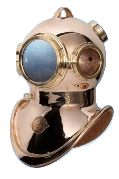Blackwood
Contributor
From the PADI Enriched Air Diver Manual;
"the DCI incidence rate is already so low in recreational diving that simply reducing nitrogen is unlikely to produce a meaningful safety improvement. Although there's been no experimental study of this, statistical estimates suggest that using enriched air within normal air limits only reduces the incidence rate a fraction of a percent. There is some risk reduction (mathematecally) if you use enriched air within air no decompression limits, but probably not a realistic, significant safety improvement from a practical point of view."
That statement is equivalent to "diving within table limits is no less risky than diving to table limits."
However, PADI 'requires' three minute stops for any dive within three 'pressure groups' of a table limit (due I suppose to some greater perceived risk associated with diving near or at the limit).
Something hasn't been well thought through (surprise).




